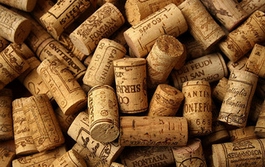 "A meal without wine is like a day without sunshine," proclaimed the famed French gastronome Jean Anthelme Brillat-Savarin. Indeed, wine was once considered an integral part of any meal among the French. In recent years, however, the percentage of people drinking wine in France has plummeted, while consumption in the United States has skyrocketed.
"A meal without wine is like a day without sunshine," proclaimed the famed French gastronome Jean Anthelme Brillat-Savarin. Indeed, wine was once considered an integral part of any meal among the French. In recent years, however, the percentage of people drinking wine in France has plummeted, while consumption in the United States has skyrocketed.In 1980, 51% of the French people drank wine daily or nearly every day. Another 30% admitted to drinking wine once or twice a week. Thirty years later, though, only 17% drink it regularly and 45% drink it occasionally. Meanwhile, 38% of French people say they never drink wine at all! Wine has been replaced at the dinner table with water, juice, and soda as the French abandon what was once considered an integral part of their culture.
Perico Lagasse, a French gastronome and journalist, laments that wine has started to be viewed as an elitist drink, straying from its popular roots.
"Wine is not some trophy product that we roll out to celebrate the grand occasions or to show off our social status," declares the famed food writer. "It is a table drink intended to accompany the meal and provide a complement to whatever is on our plate."
Demographics, though, seem to be against the French wine lovers. The rise of the car certainly put a damper on drinking with every meal, and the growing Muslim community is limiting wine drinking. Additionally, beers and mixers are more available as an alternative to wine. French millennials, for their part, do not view wine with the same communal, cultural respect that their parents and grandparents did. "For them, wine is a product like any other, and they need persuading that it is worth their money."
While wine declines in the Old World, it is experiencing an unparalleled boom in the New World. According to the Wine Institute, there were over 360 million cases of wine sold in the United States last year. That is more than one case for every man, woman, and child in the country. Wine has become a $34.6 billion industry in the U.S., up from $21.8 billion and 259 million cases sold a decade ago.
The majority of wine sold in the United States comes from California, which accounts for 207 million cases sold in the United States. California vintners also export an additional 43 million cases abroad, accounting for 90% of American wine exports. The Californian wine industry alone is worth $22 billion — up from $13.8 billion a decade ago. With North Dakota beginning to make its own wine in 2002, every single state in the Union now produces bottles of the good stuff.
Why is wine gaining so much traction among American consumers? It could be partially attributable to the growing "foodie" trend in the country. Quality-wise, there are millions of good wines being produced in California at amazingly affordable prices, which could account for some of the increase. Culturally, too, it seems that Americans are starting to view wine as the French once did - not as some elitist treat, but a popular drink with a place at the dinner table. This bodes well for American culture.
Wine is a spectacular drink. It epitomizes civilization, and the perfect communion between man and nature. Good wine demands hard work and a good relationship with land and climate; it is worthy of respect. The drinking of wine, however, is an even better treat to culture. Wine is inherently social, and almost demands being shared between friends. As notable winemaker Jean-Charles Boisset recently said, "Wine is about friendship. Wine is about family values. Wine is about living great moments together."
France's loss is America's gain. It allows to take a moment and appreciate culture, appreciate companionship, and appreciate this wonderful gift of civilization and society. There is no better time to be involved in the American wine industry, and no time like the present to share some wine and food with friends. Maybe the Old World will one day come to its senses and enjoy this gift again. Cheers!





